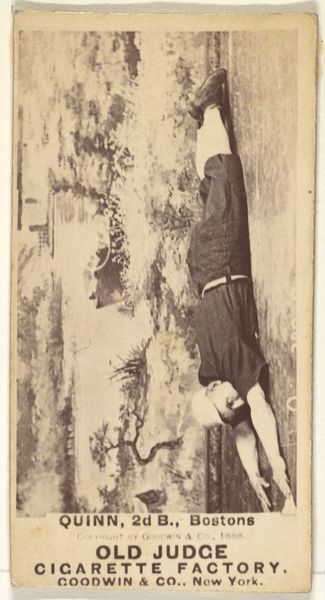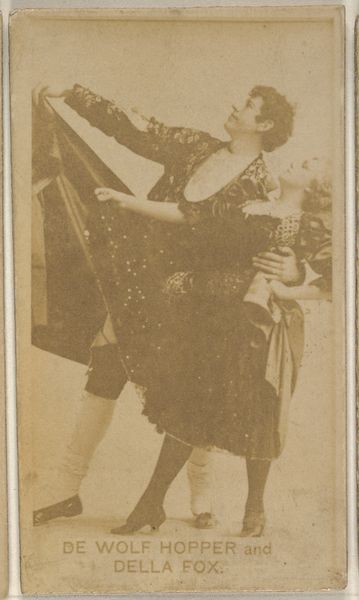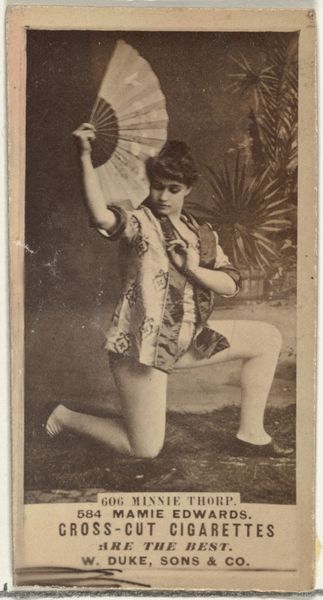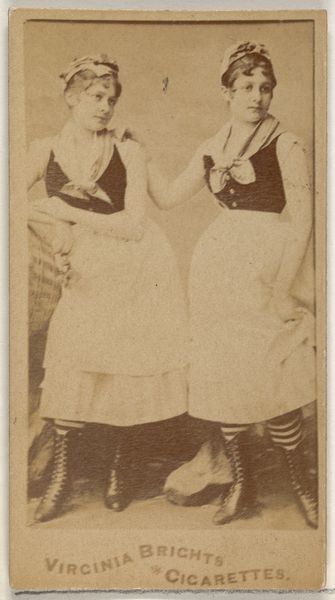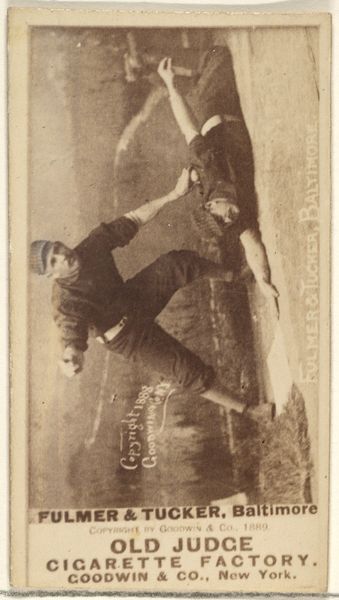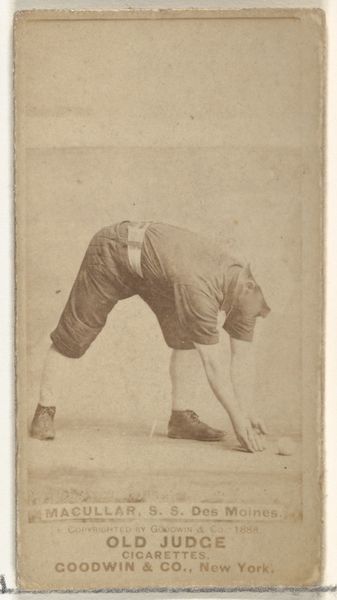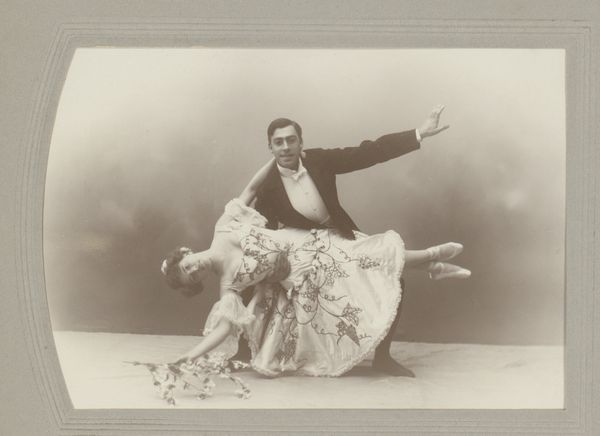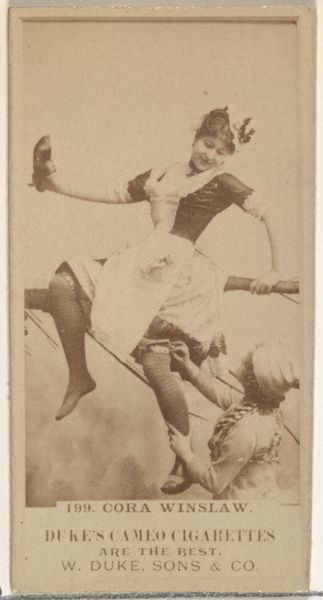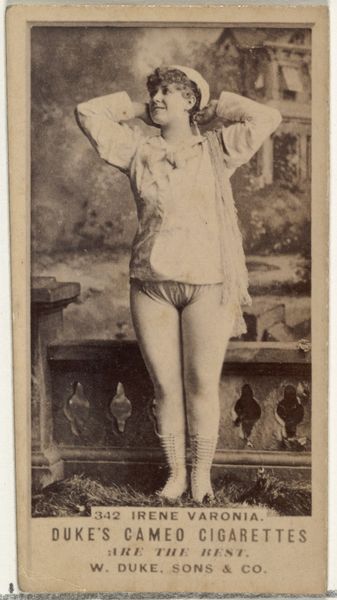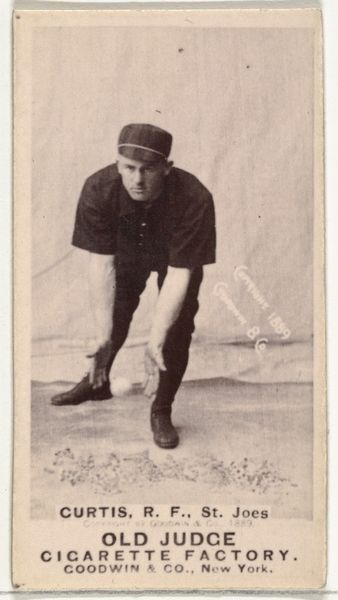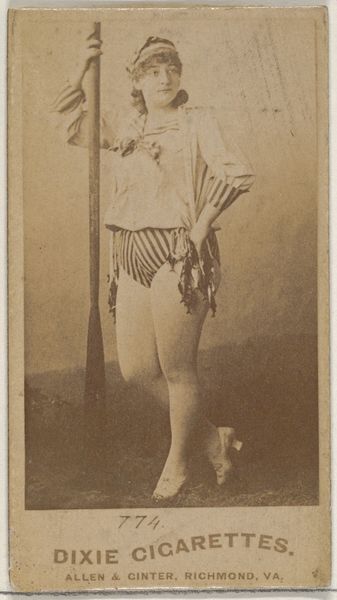
photography
#
portrait
#
figuration
#
photography
#
genre-painting
Copyright: Karimeh Abbud,Fair Use
Curator: This captivating photograph, entitled "Acrobat," was taken by Karimeh Abbud around 1921. What’s your immediate take on it? Editor: Well, the first thing that strikes me is the… precariousness. The whole image hinges on the physical labor, and the improbable balance maintained by these two figures and that somewhat flimsy chair, its legs resting on repurposed bottles, no less. Curator: Precisely! The acrobatic feat certainly grabs your attention. Notice the young woman to the left. She’s in repose and wears what looks like a headdress or scarf. The salute gesture… it has connotations, of course. Dedication or allegiance, maybe. What meanings does this vocabulary invoke? Editor: For me, it is fascinating to look at the relationship between labor and what some consider “performance”. This scene speaks to the day-to-day struggles around the means of production. Someone assembled this studio, posed the sitters, built the prop with scavenged refuse. These figures come together through their acts of creative resistance in constrained settings, the studio itself built through necessity. Curator: Abbud clearly saw beyond the surface. Consider the bottles. A humble object, yet they literally ground this scene, supporting the central performance, suggesting an aspiration but rooted in local consumption. This also prompts me to ponder if we consider that in the early 20th century a local studio like hers had a broader effect on cultural memory and preservation for Palestinians in the region? Editor: Absolutely, the physical act of setting up the shot becomes crucial to understanding the final product. Abbud's approach collapses boundaries between artistic genres, using local items for commercial photography, in a manner that suggests new traditions of craft that emerge due to a need for self-representation. Curator: This work lingers with me, as the symbolic order and political circumstances behind even a seemingly simple portrait from this period speak to how personal and cultural meanings circulate. Editor: It pushes me to consider how a photograph can be so much more than its immediate aesthetic. By focusing on materiality and labour we move toward more nuanced conversations that reframe our assumptions about art.
Comments
No comments
Be the first to comment and join the conversation on the ultimate creative platform.

